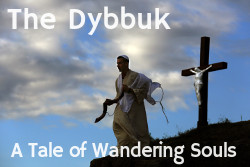"The Forest" - Description
“The Forest” is a black and white experimental film. The action of the film takes place in two periods of time. An old man leads his son through a forest, and is simultaneously under his care confined to bed with a deadly illness.
The film attempts to portray the boundary zone between life and death. It examines the difficult relationship of understanding between father and son. They are to be combined with equal rights in animated and acted scenes. The formal essence of the idea is the seamless mounting penetrating these two worlds so that the changeability is virtually unnoticed by the audience, but accepted incidentally as the uniform language of the tale. The contemporary and forest themes do not signify a separation of the live and animated action. They fulfil themselves in the literary sense and create an impression of parallel coexisting worlds, where the same persons may experience different fates.
The essence of both stories is the relationship between the very old man and the man in middle age. This co-dependency, in which the questions of domination, cooperation, love, sacrifice and death appear. The history of the man in the forest is connected with the biblical theme of Abraham and Isaac. The story of the ill father and his son is harsh and to the contrary natural. Both themes run in parallel, but as if in opposite directions. Certain dramatic points seem related and mutually penetrating, reaching culmination in the scene of murder in the forest and in the scene of the opening eye of the dying father.
The co-dependence of four male figures in two male persons is to lead to touching the secrets of death. The title Forest, inspired in an unusual dream, is a metaphor for the collective fates of all people.
The method of filming approaches that of a documentary. It happens as an unseen entrance to the world of myth and pure creation. Black and white images and minimal dialogue have the effect that image and synchronising effects constitute the principle language of the story. This also is linked to the masters of the era of silent films, such as Dreyer and Murnau.



















